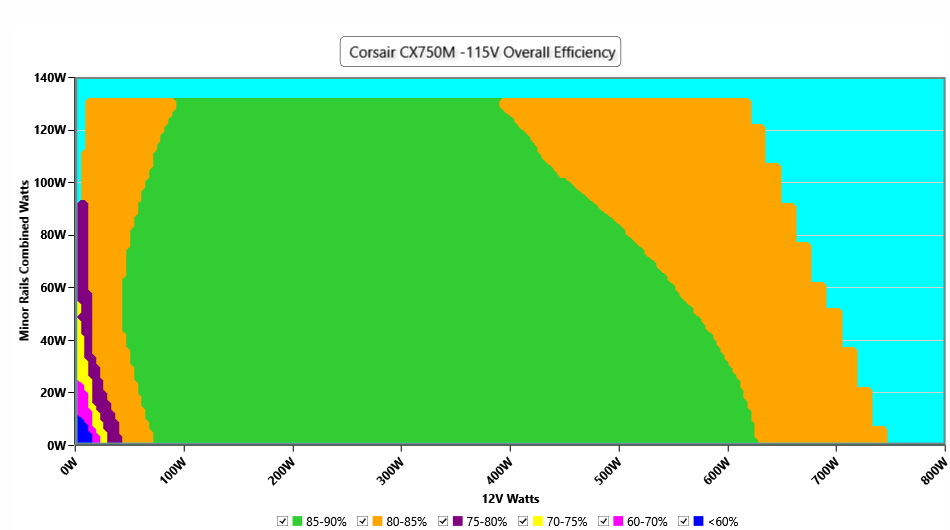Why you can trust Tom's Hardware
Protection Features
Check out our PSUs 101 article to learn more about PSU protection features.
| OCP (Cold @ 23°C) | 12V: 74.4A (120%), 11.957V 5V: 30.5A (152.5%), 5.055V 3.3V: 28.5A (142.5%), 3.309V 5VSB: 4.2A (140%), 4.980V |
| OCP (Hot @ 40°C) | 12V: 74A (119.35%), 11.955V 5V: 29.5A (147.5%), 5.056V 3.3V: 27.5A (137.5%), 3.308V 5VSB: 4.2A (140%), 4.977V |
| OPP (Cold @ 22°C) | 939.85W (125.31%) |
| OPP (Hot @ 39°C) | 884.38W (118.87%) |
| OTP | ✓ (185°C @ 12V Heat Sink) |
| SCP | 12V to Earth: ✓ 5V to Earth: ✓ 3.3V to Earth: ✓ 5VSB to Earth: ✓ -12V to Earth: ✓ |
| PWR_OK | Accurate but lower than 16ms |
| NLO | ✓ |
| SIP | Surge: MOV Inrush: NTC Thermistor |
The OCP triggering points are set high on the minor rails but correctly set at 12V. The over power protection also works appropriately under high and low temperatures. Moreover, there is over temperature protection, which is essential to any PSU. Finally, it would be nice to see a bypass relay for the NTC thermistor, which would enhance inrush current protection, but most PSUs lack this relay in this price range.
DC Power Sequencing
According to Intel’s most recent Power Supply Design Guide (revision 1.4), the +12V and 5V outputs must be equal to or greater than the 3.3V rail at all times. Unfortunately, Intel doesn't mention why it is so important to always keep the 3.3V rail's voltage lower than the levels of the other two outputs.
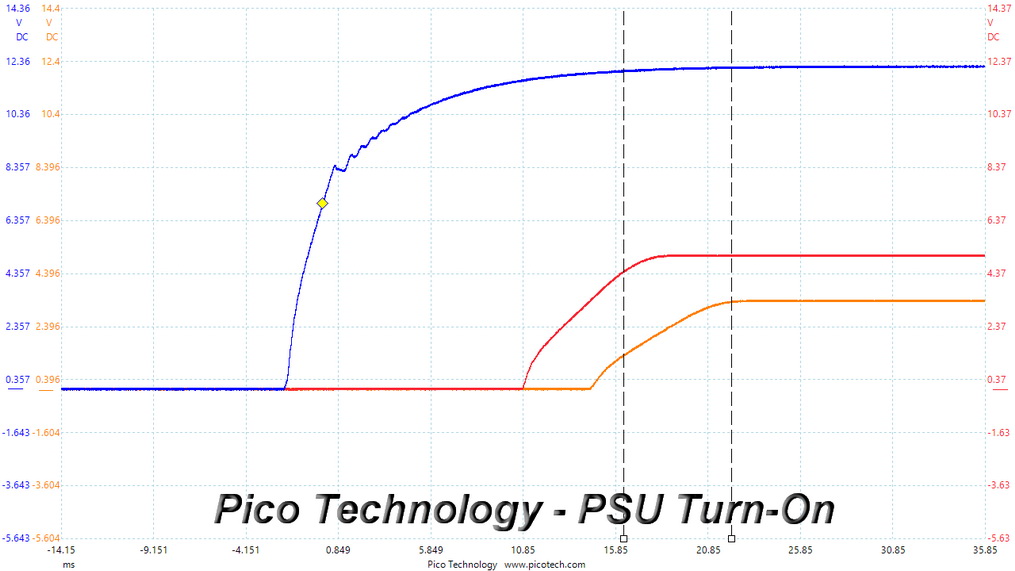
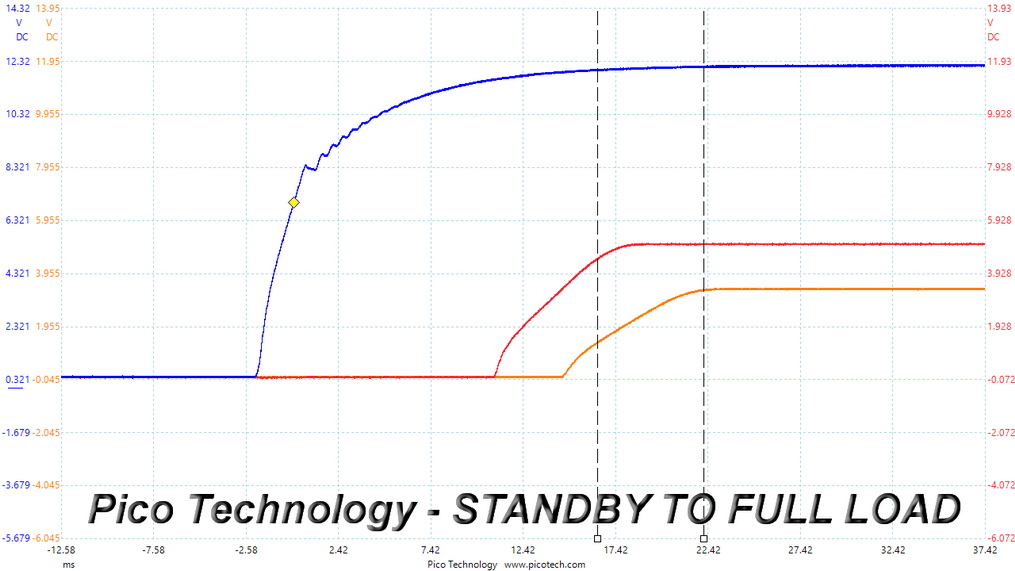
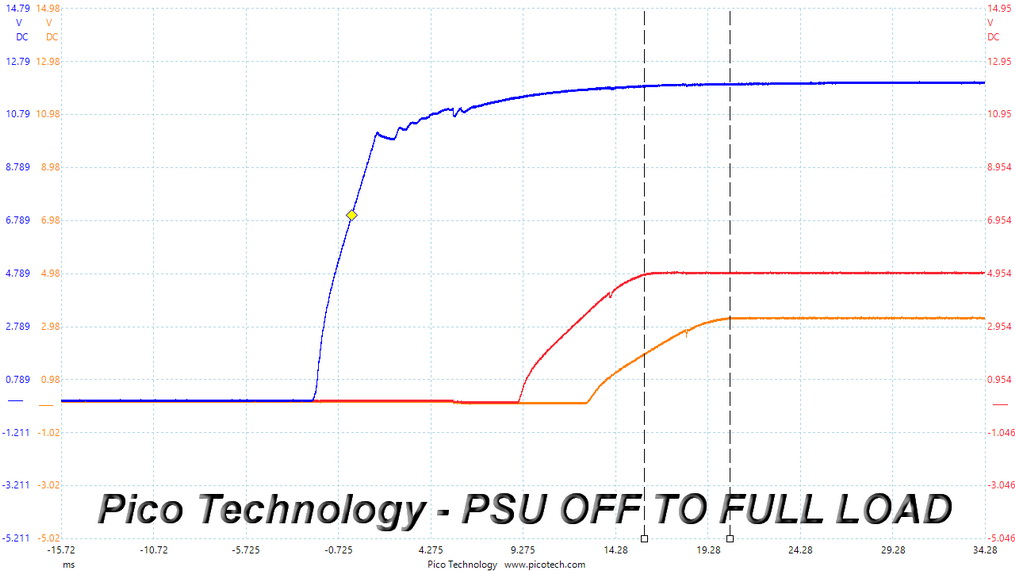
No problems here since the 3.3V rail is always lower than the other two.
Cross Load Tests
To generate the following charts, we set our loaders to auto mode through custom-made software before trying more than 25,000 possible load combinations with the +12V, 5V, and 3.3V rails. The deviations in each of the charts below are calculated by taking the nominal values of the rails (12V, 5V, and 3.3V) as point zero. The ambient temperature during testing was between 30 to 32 degrees Celsius (86 to 89.6 degrees Fahrenheit).
Load Regulation Charts
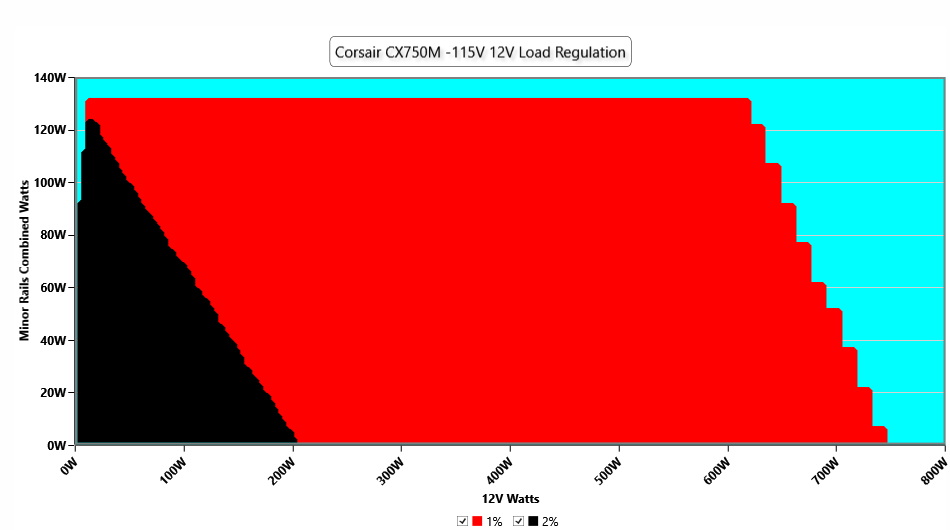
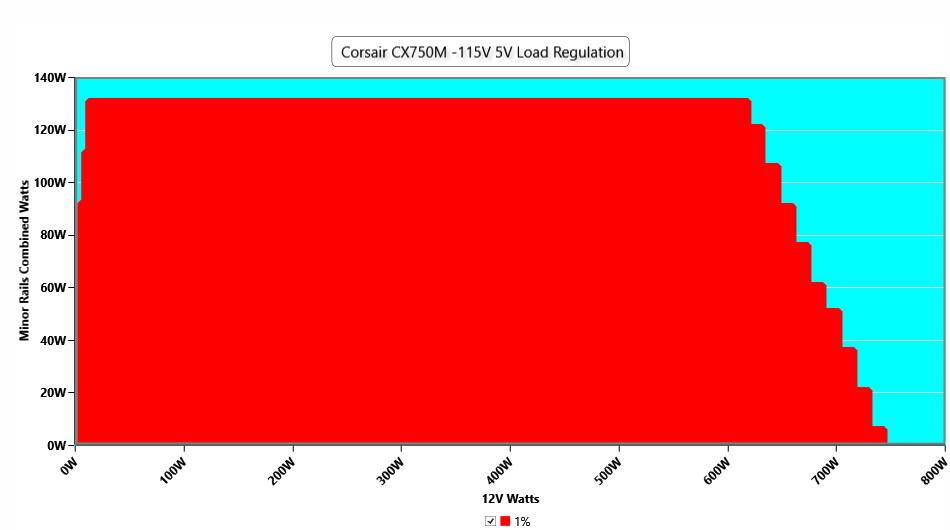
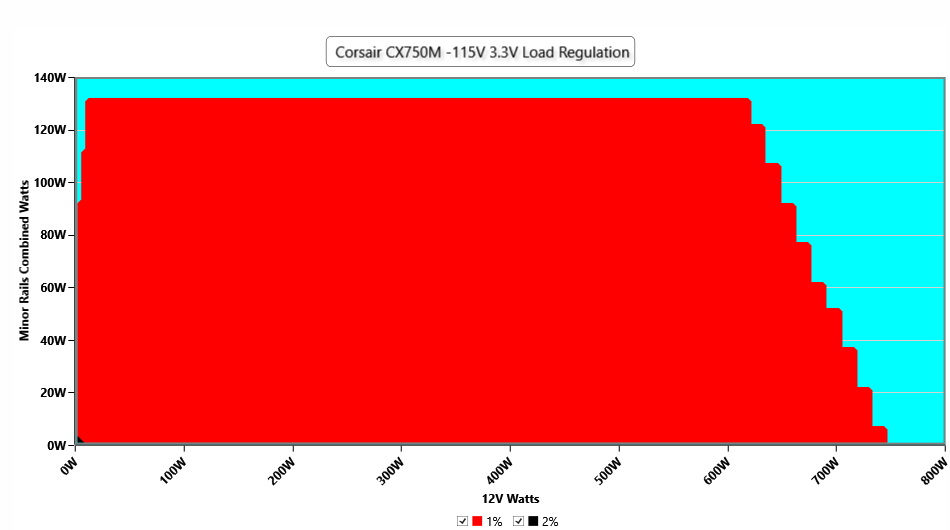
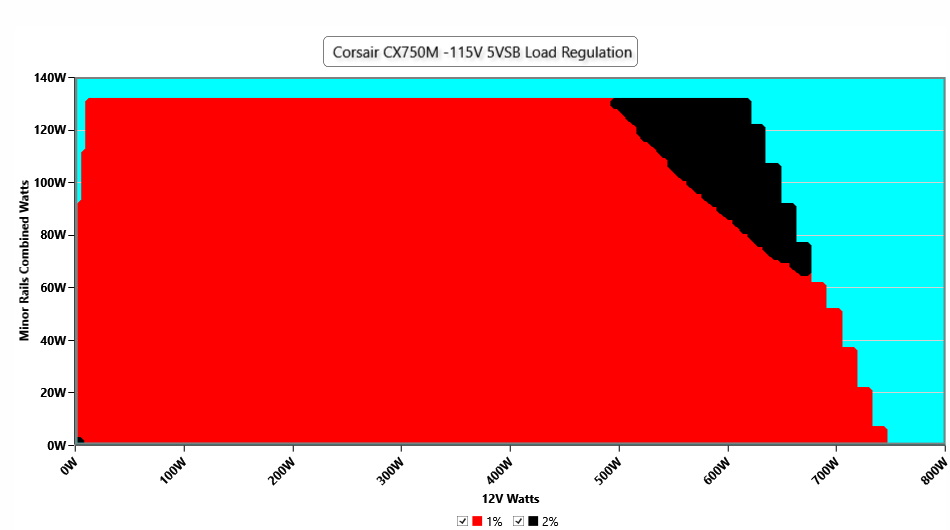
Efficiency Graph
Ripple Graphs
The lower the power supply's ripple, the more stable the system will be and less stress will also be applied to its components.
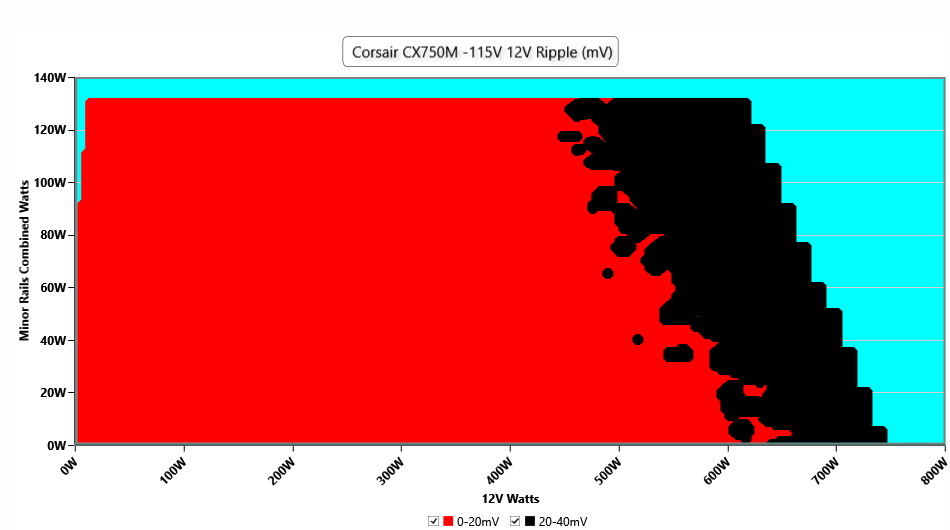
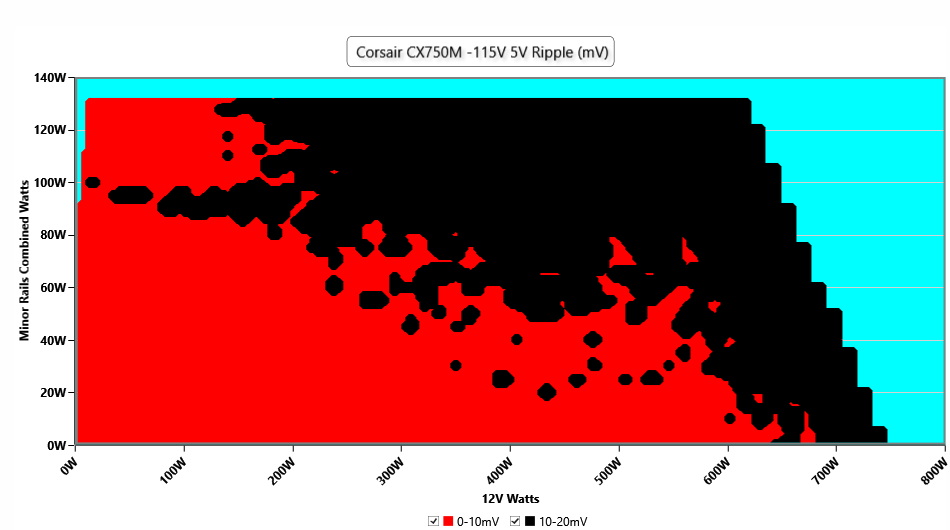
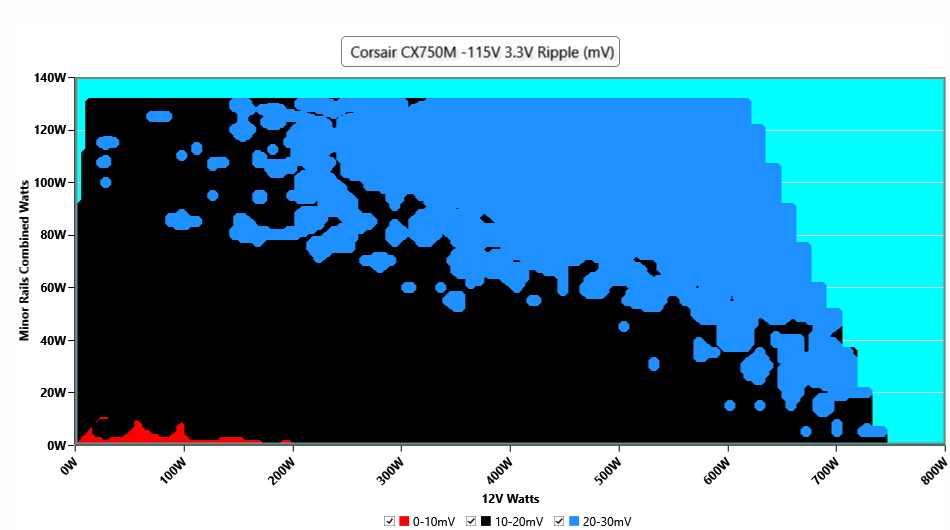
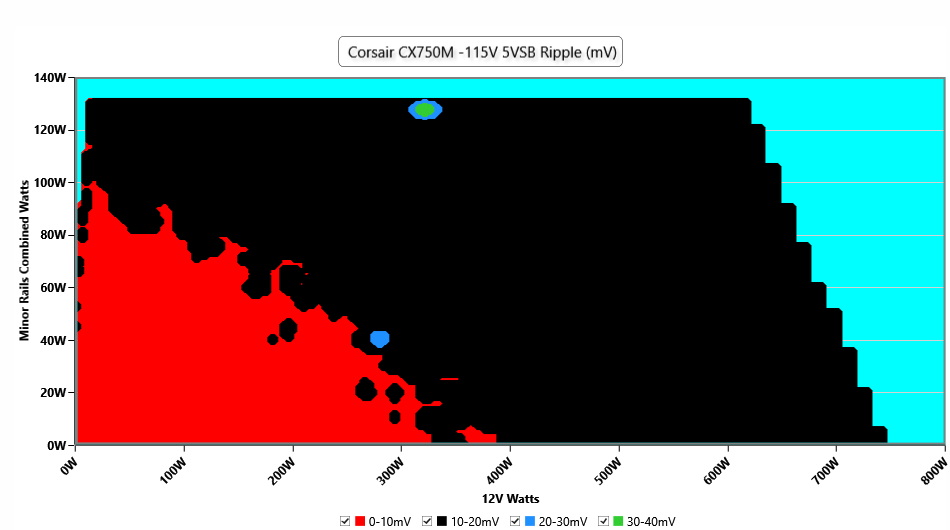
Infrared Images
We apply a half-load for 10 minutes with the PSU's top cover and cooling fan removed before taking photos with a modified Fluke Ti480 PRO camera able to deliver an IR resolution of 640x480 (307,200 pixels).
Get Tom's Hardware's best news and in-depth reviews, straight to your inbox.
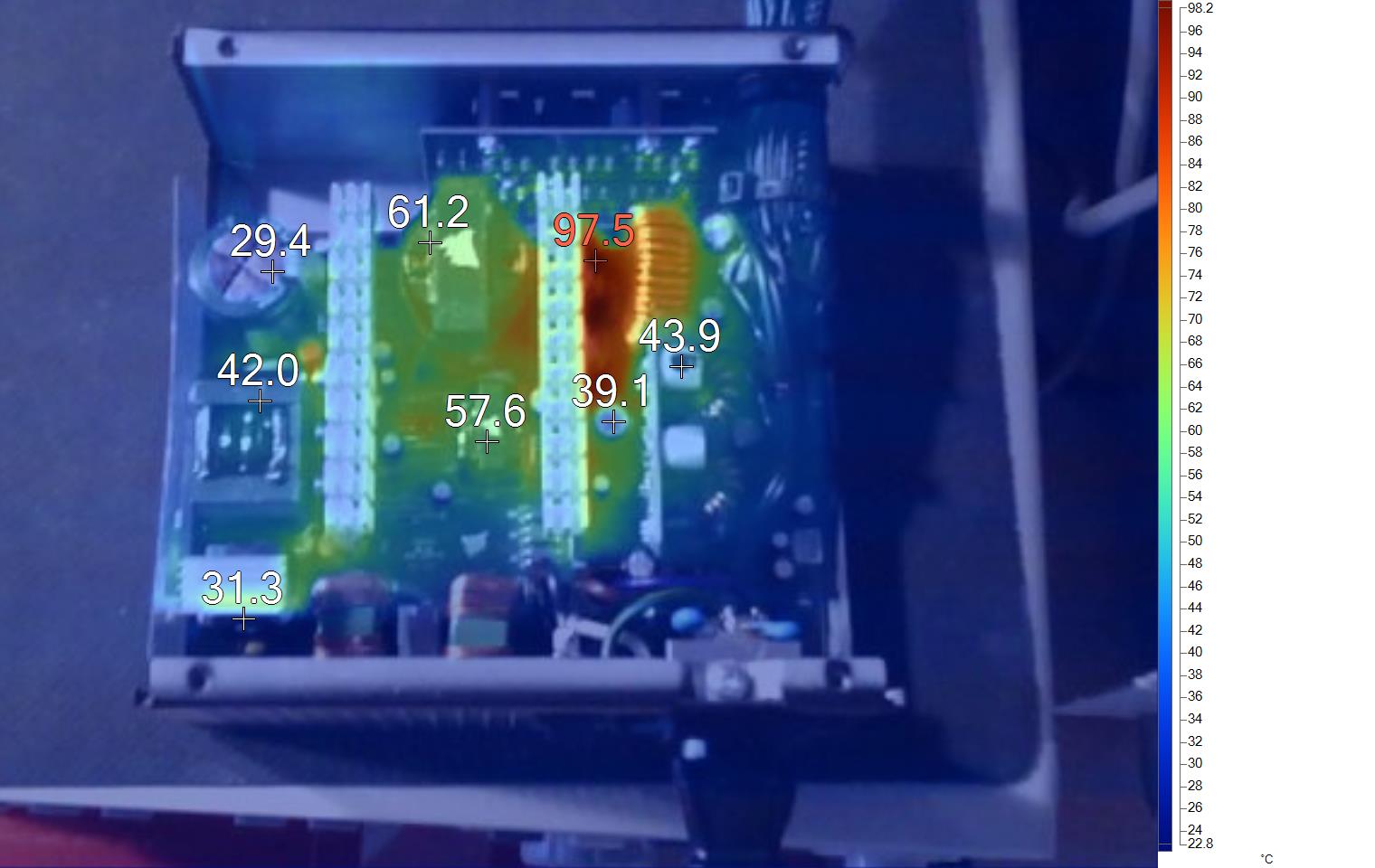
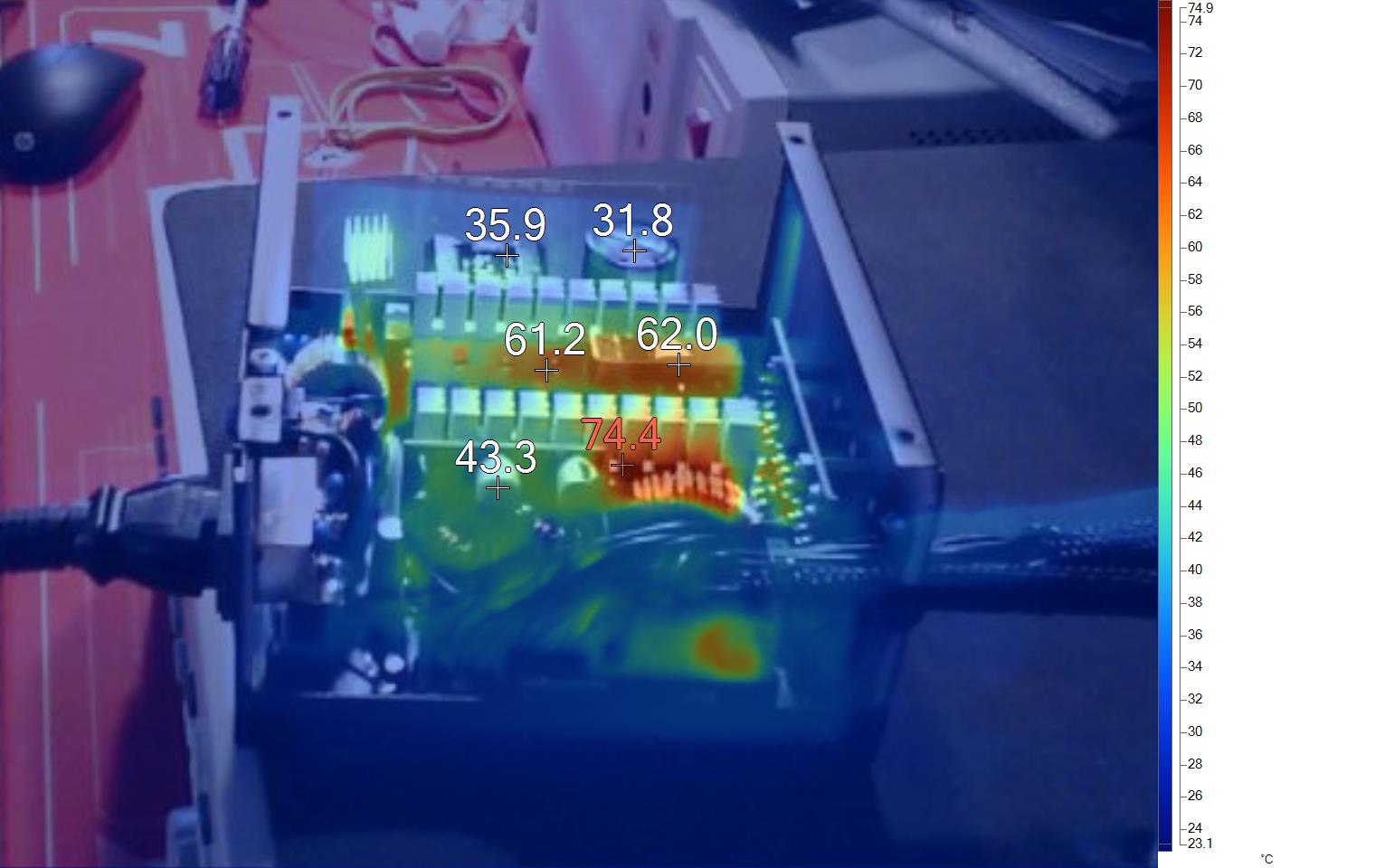
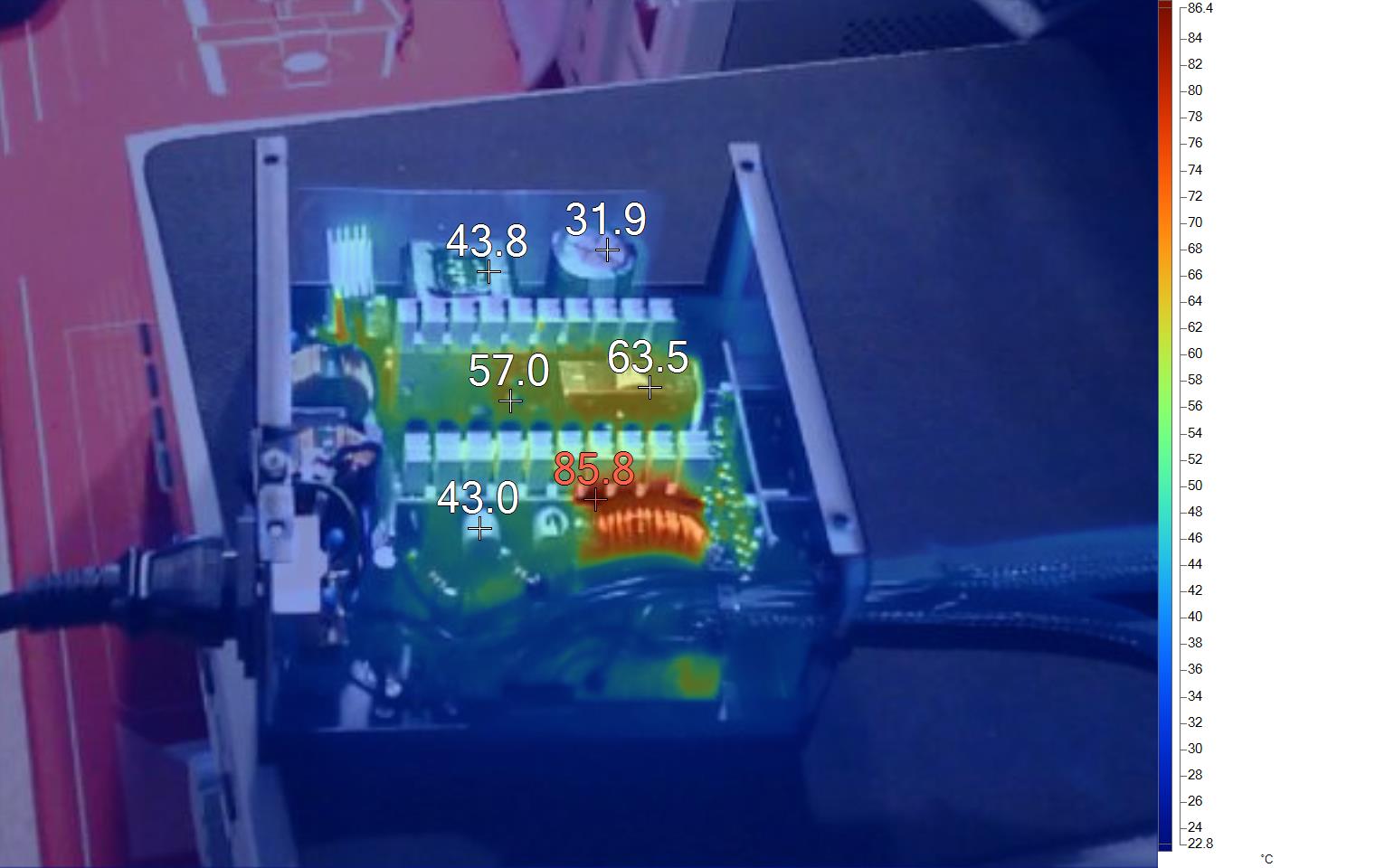
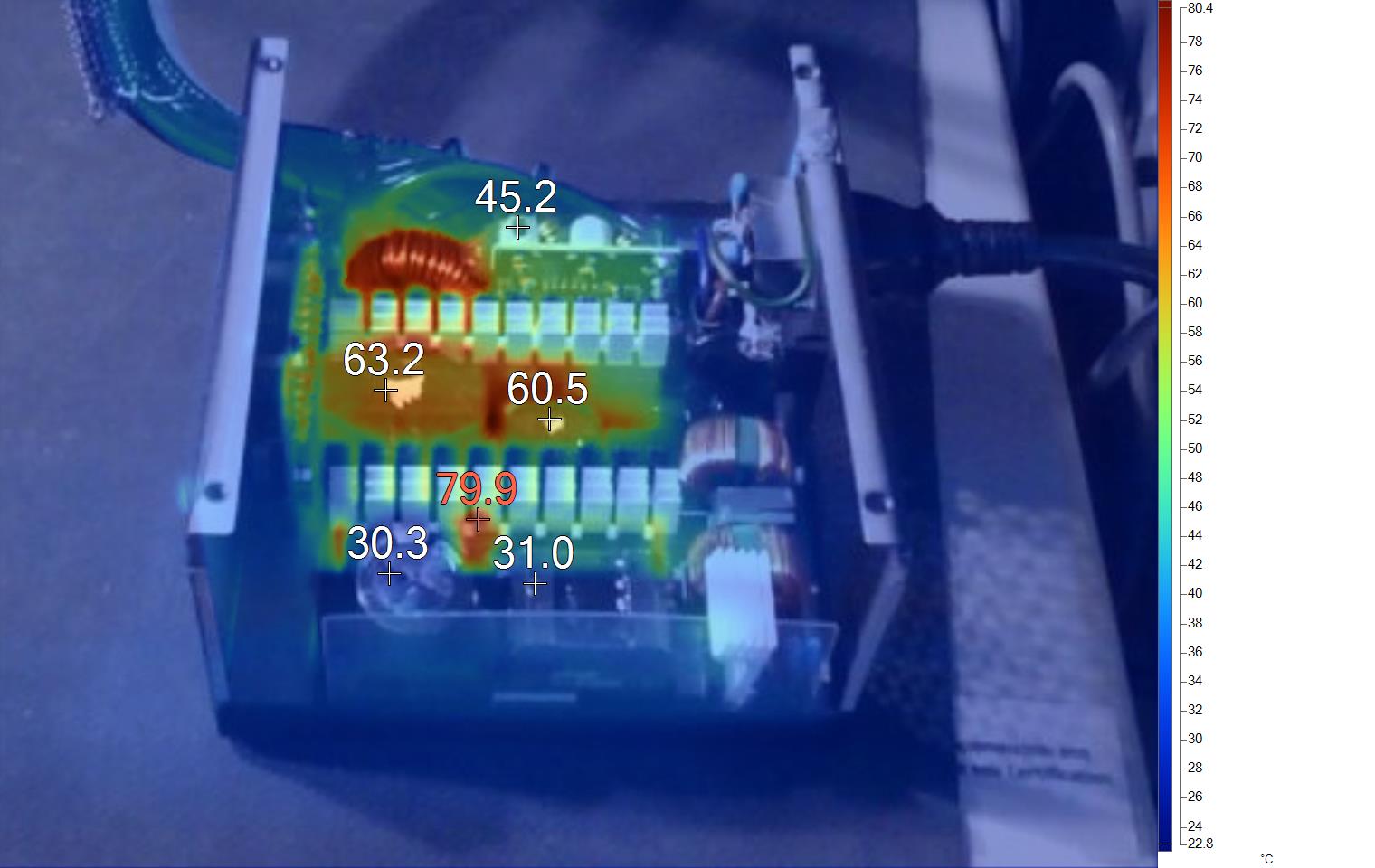
The secondary side gets hot, in the 12V rail's generation and filtering area. This PSU is not meant to operate without a fan, especially under the conditions we applied, so it is natural to see high temperatures in the parts that are stressed the most.
MORE: Best Power Supplies
MORE: How We Test Power Supplies
MORE: All Power Supply Content
Current page: Protection Features, DC Power Sequencing, Cross-Load Tests and Infrared Images
Prev Page Load Regulation, Hold-Up Time, Inrush & Leakage Current, Efficiency and Noise Next Page Transient Response Tests, Timing Tests, Ripple Measurements and EMC Pre-Compliance Testing
Aris Mpitziopoulos is a contributing editor at Tom's Hardware, covering PSUs.
-
Co BIY Another great review!Reply
Why do you prefer a full modular cable set up to this semi-modular ? At this price point I think semi-modular is "best". One less failure point and greater efficiency. I don't think custom cabling is a consideration for this range. I think Semi-modular should be considered best practice outside of Vanity/RGB/Bling focused lines.
For appearance sake I do think the exit point of a semi-modular "main cable" of could be made to visually match the other cables without giving up the advantages.
